Projects
‘The Dock Master’s Wife’ by unknown artist (c. 1870) from the Hull Maritime Musem. Oil on canvas. Conservation was carried out in 2019 and was funded by the National Lottery Heritage Fund as part of the ‘Hull: Yorkshire’s Maritime City’ (HYMC) project
‘The Dock Master’s Wife’ by unknown artist (c. 1870) from the Hull Maritime Museum. Oil on canvas. Conservation was carried out in 2019 and was funded by the National Lottery Heritage Fund as part of the ‘Hull: Yorkshire’s Maritime City’ (HYMC) project.
When the painting arrived at the conservation studio, there was a heavy surface dirt deposit on the front of the painting as well as several layers of very discoloured varnish. Some areas of ground and paint were flaking and unstable. The canvas had been severely torn in several places, most noticeably the large complex tear at the centre of the painting. This painting required painstaking cleaning and major structural treatment.
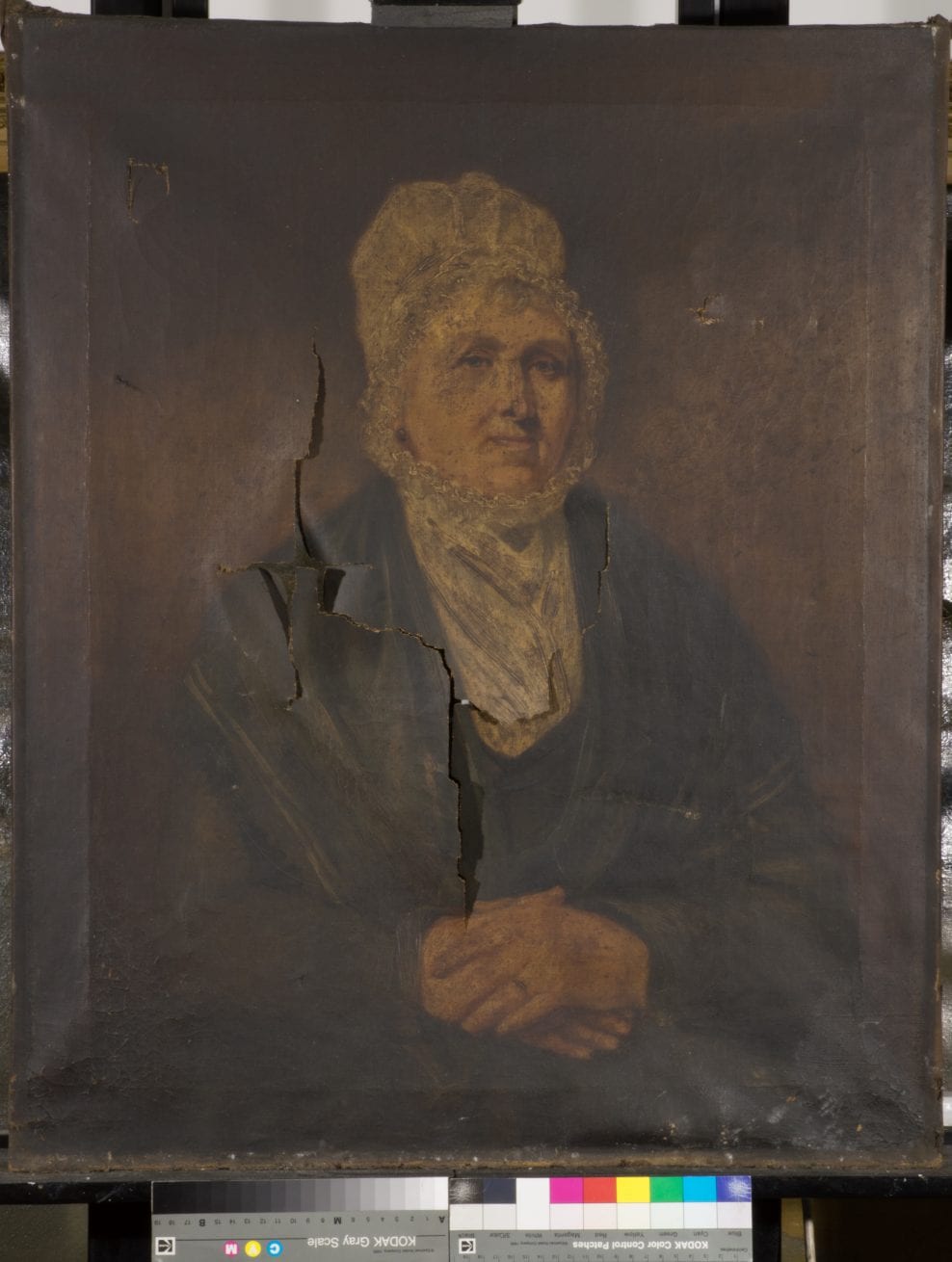
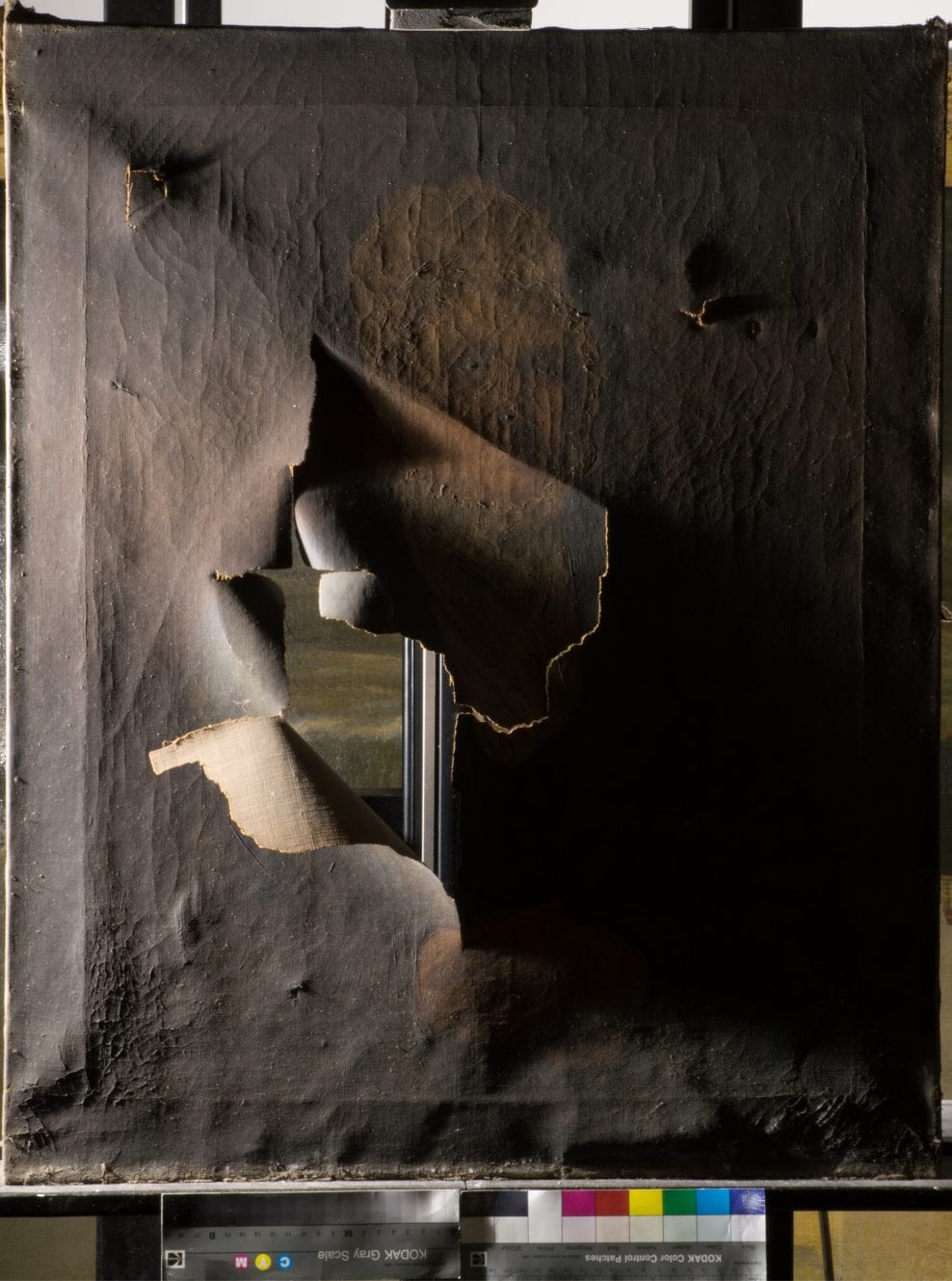
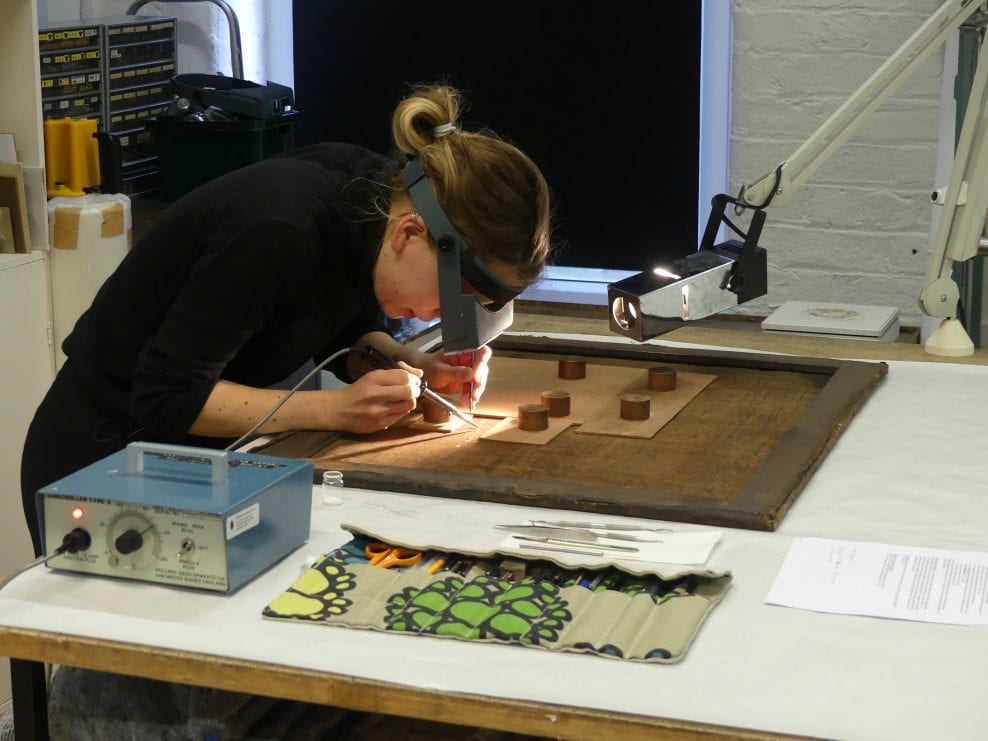
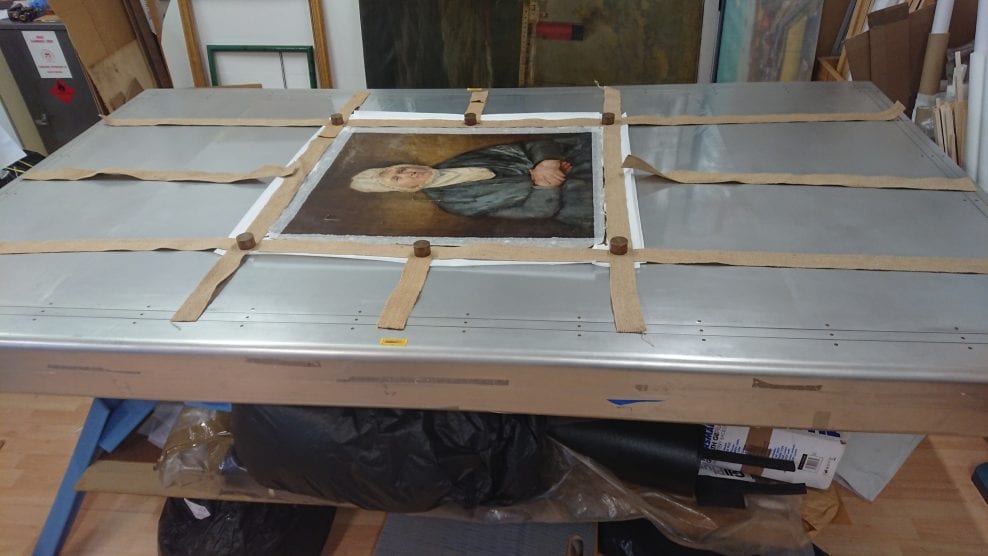
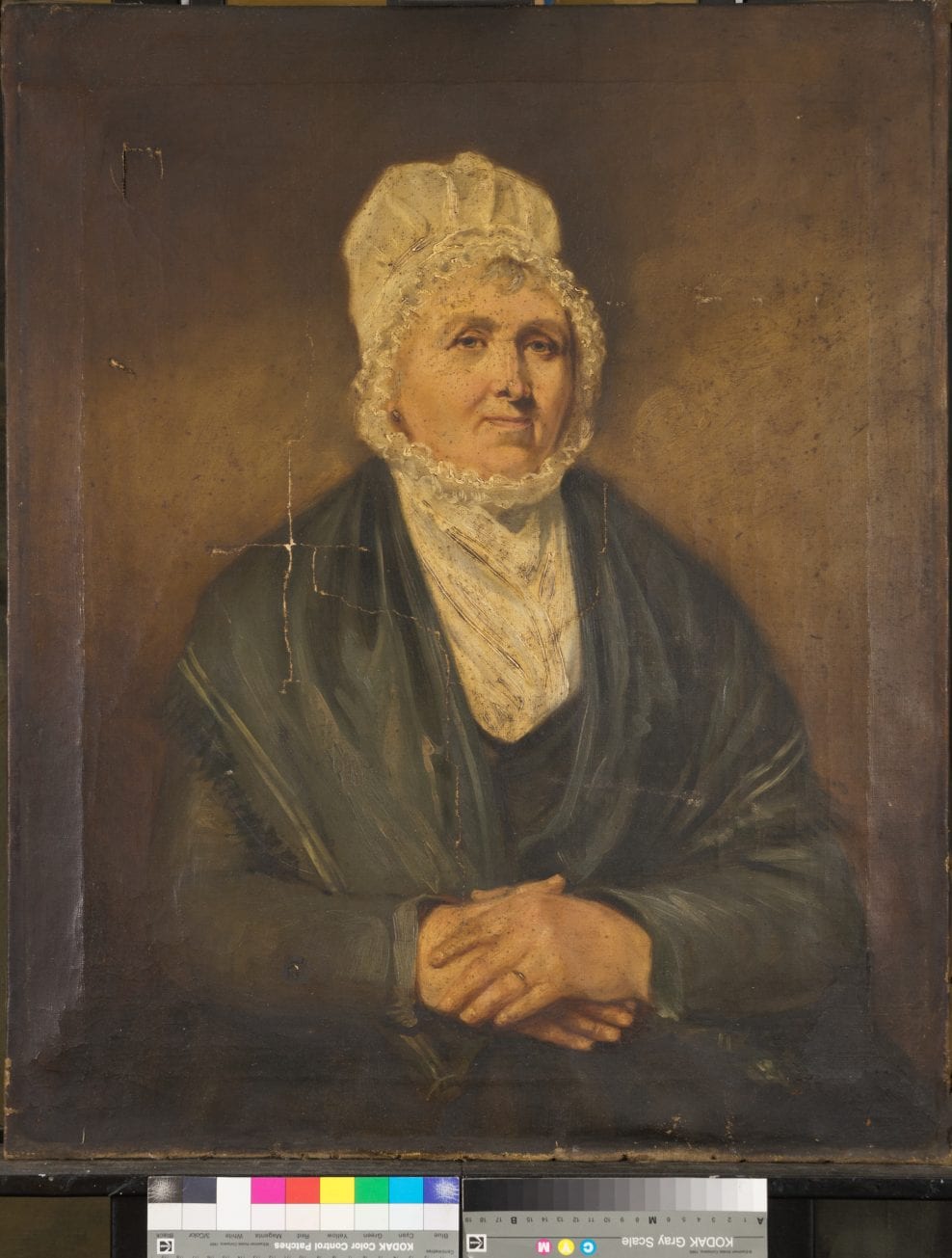
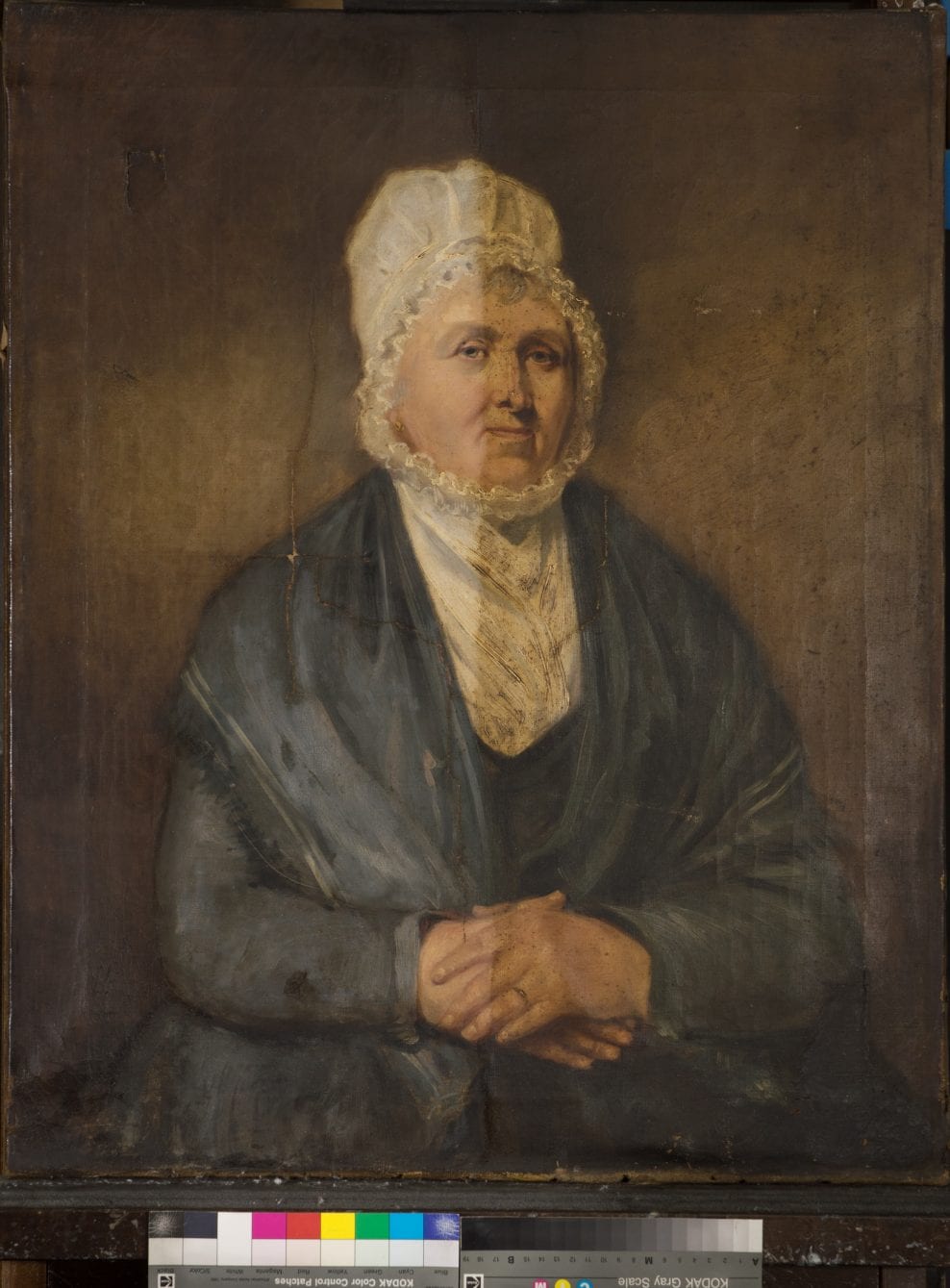
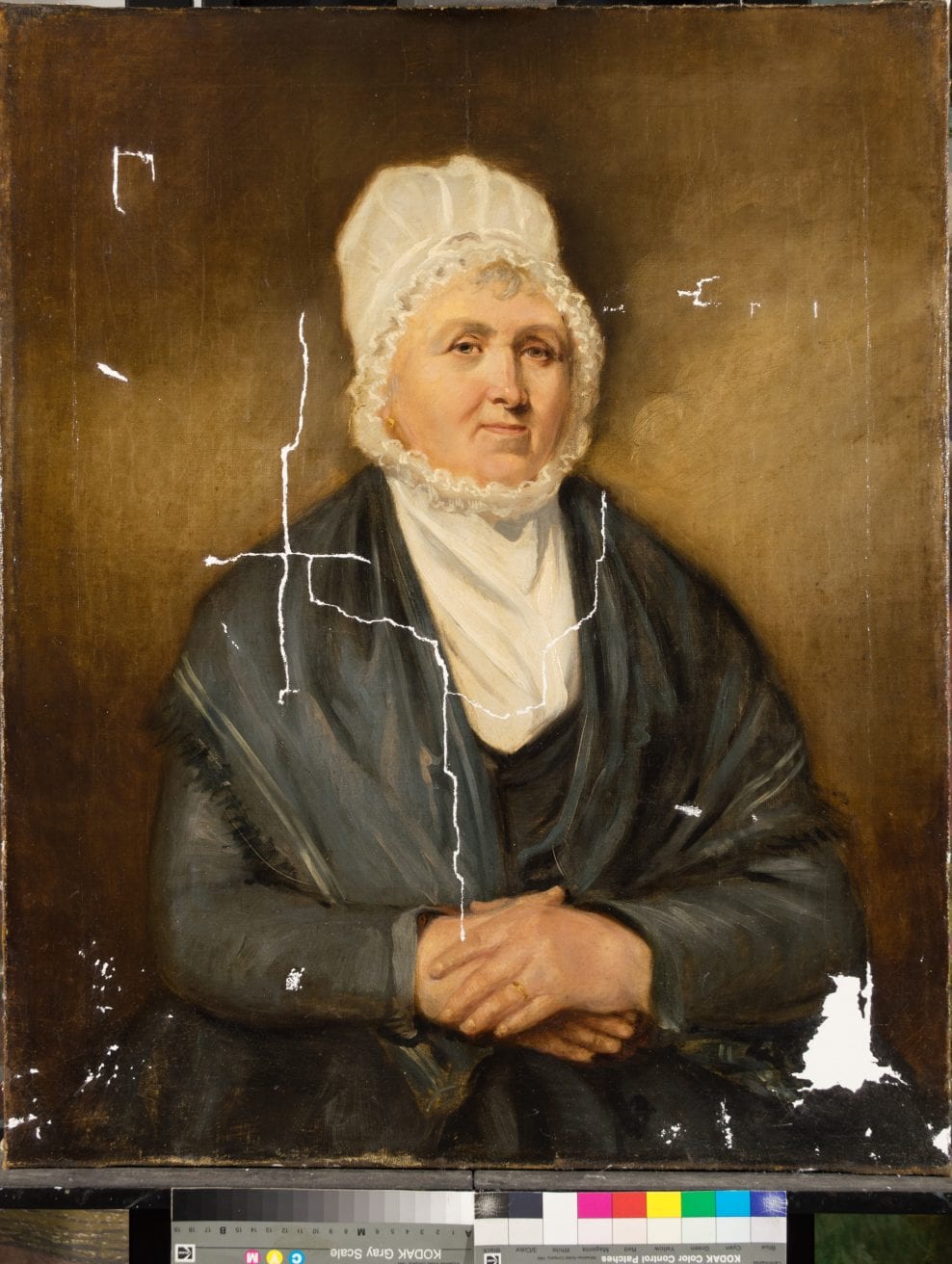
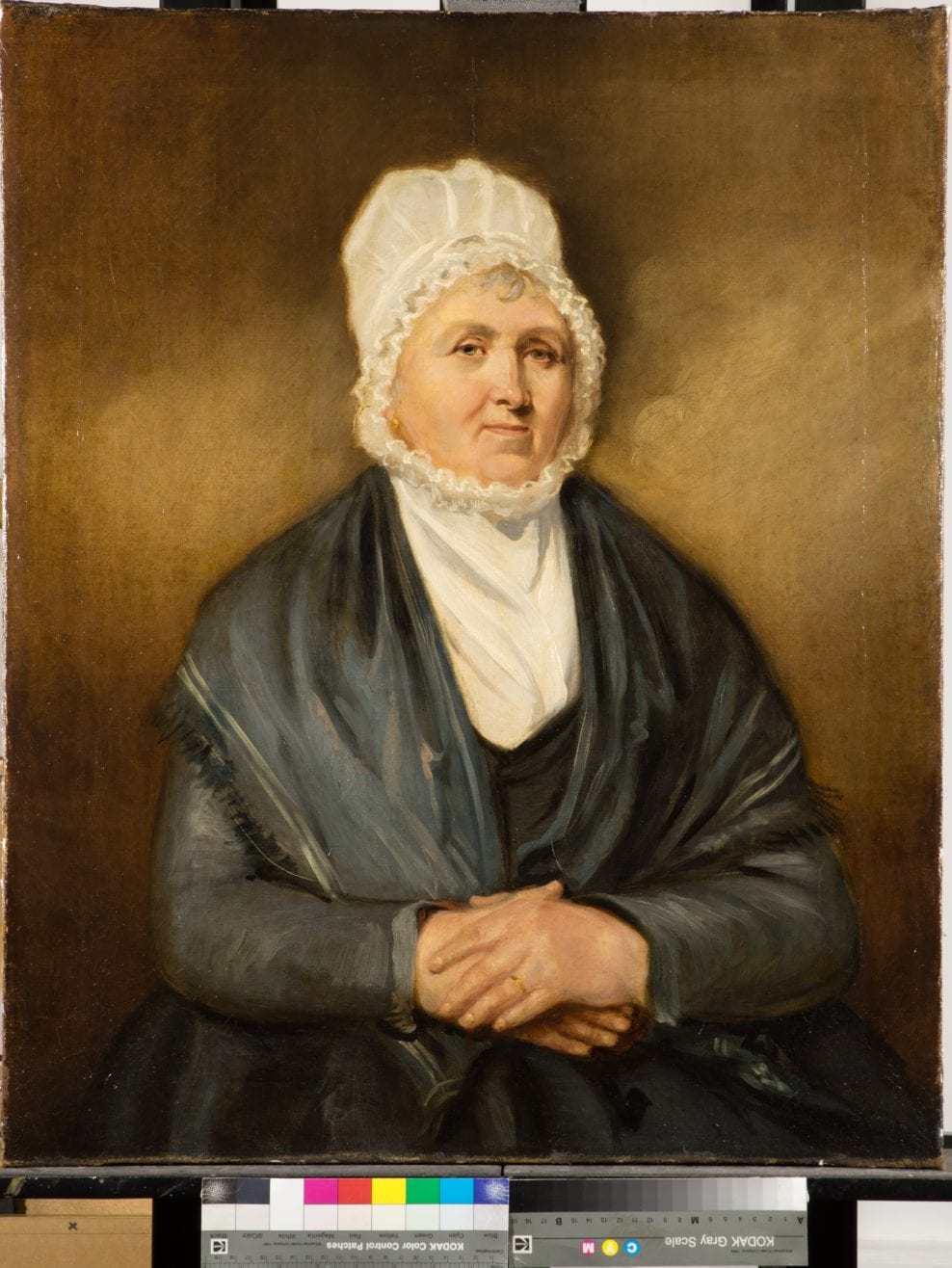
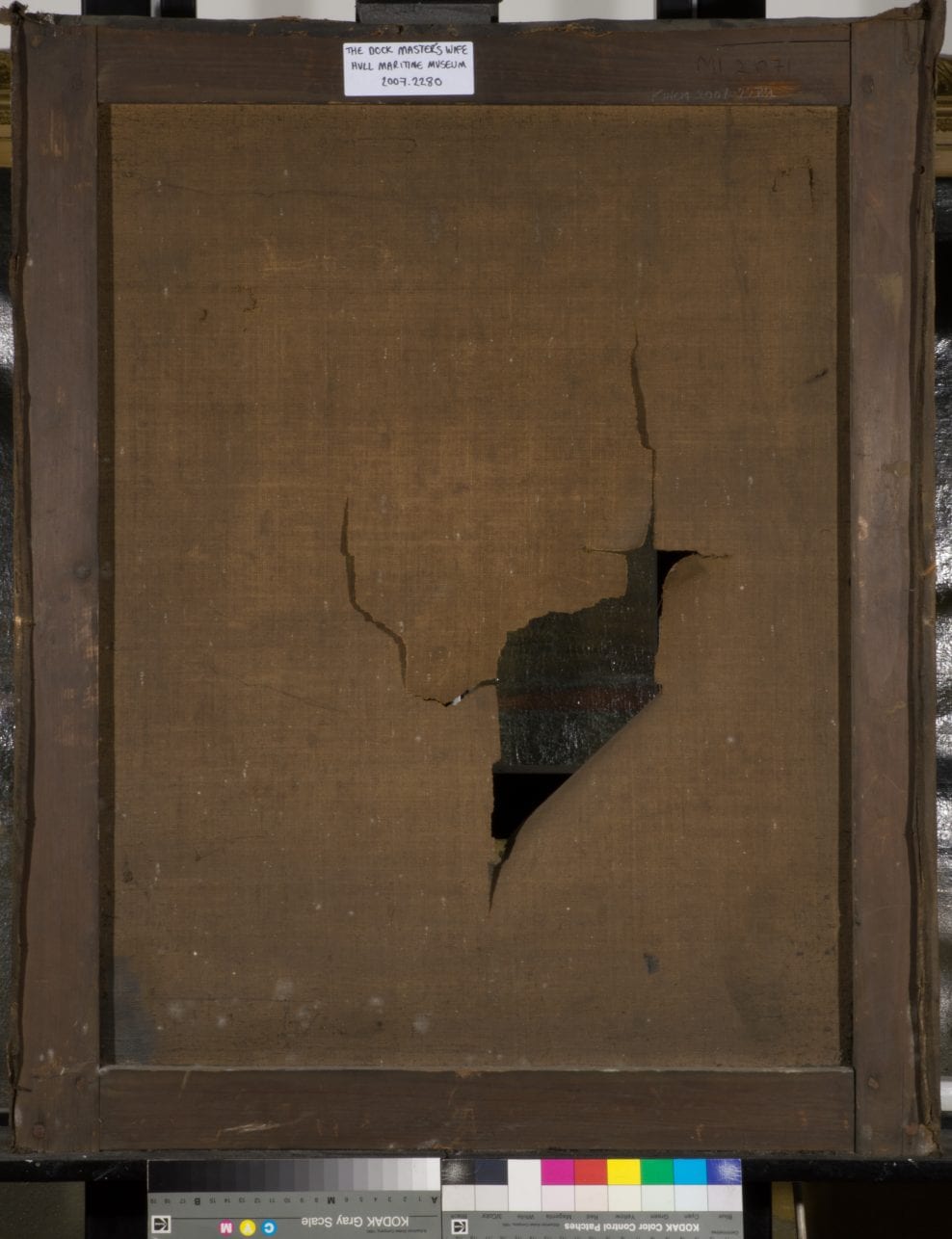
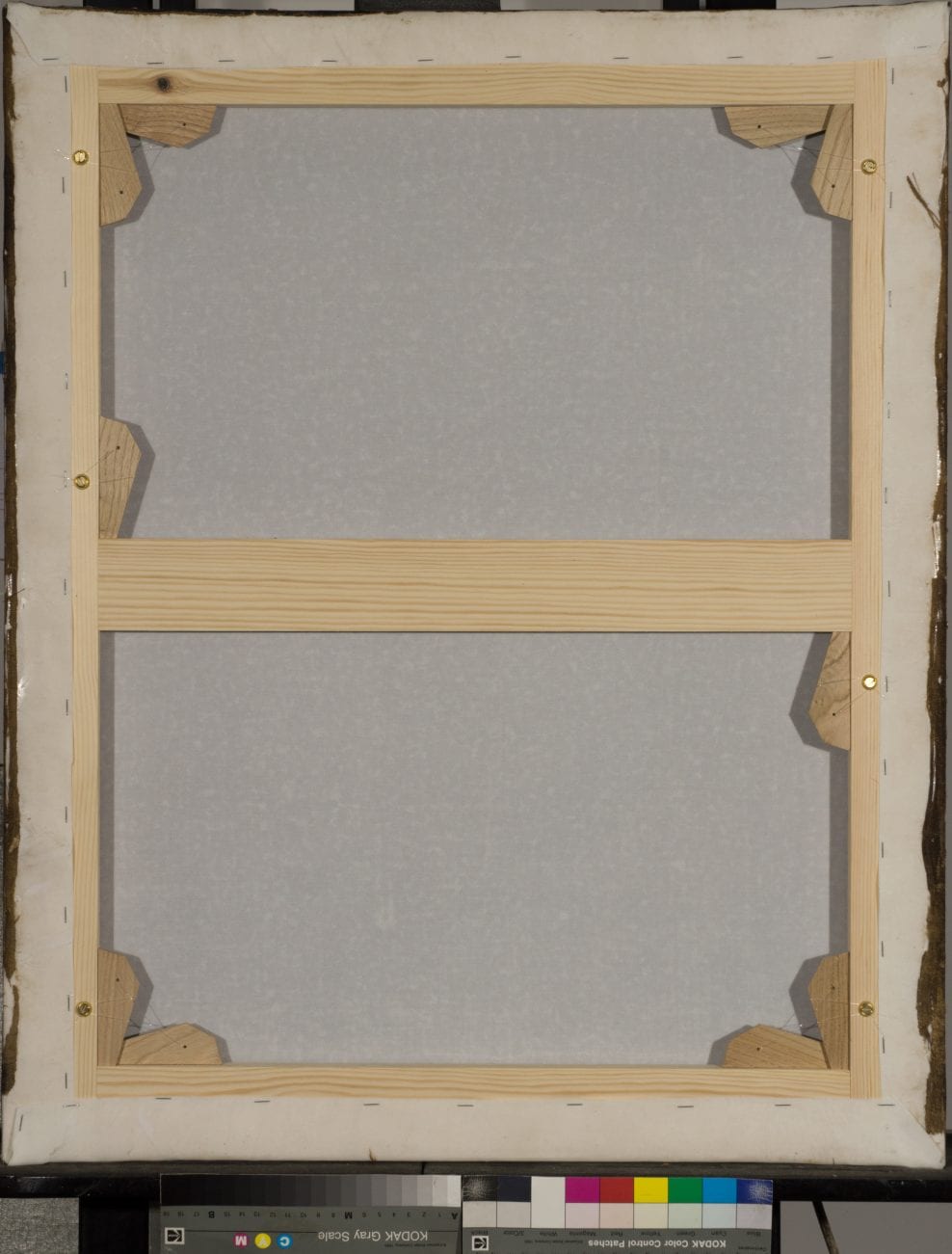
The Dock Master’s Wife by unknown artist (c. 1870) from the Hull Maritime Museum
- The first stage of treatment was to consolidate the flaking and loose ground and paint layers associated with the canvas tears. It was then possible to safely place the painting face-down and clean dust, dirt and debris from the reverse of the canvas. Once this canvas was cleaned, moisture treatments were carried out to ease out the canvas distortions associated with the various tears.
- Tear mending: The canvas threads at either side of each tear were re-aligned and re-adhered using a conservation grade adhesive. Where threads were missing, new threads were cut to size, adhered to the existing threads, and woven into the structure.
In order to offer additional support to the large and complex tear repairs, it was decided to line the original canvas onto a secondary canvas support. The new secondary canvas support comprised a fine synthetic interleaf fabric and a polyester sailcloth lining fabric. The fabrics were adhered to one another using a conservation grade heat seal adhesive.
The inadequate strainer was archived, and the painting was tensioned on a new softwood stretcher.
Once the structure of the painting had been stabilised, it was possible to start work on the front. Tests were carried out to ascertain the best cleaning solution for removing the thick dirt layers which had deposited on the front of the painting. The dirt layers were then removed using cotton wool swabs and the bespoke cleaning solution.
- A range of solvents and solvent mixtures were then tested to ascertain the best mixture for removal of the yellowed varnish layers, without affecting the underlying original paint layers. The varnish layers were thought to have oil mixed in with the natural resins, making this varnish removal especially challenging.
- After the painting had been cleaned, an isolating varnish was applied to protect the original paint layers. Ground and paint layers losses associated with the various canvas tears were then filled with a hand-made ‘putty’ comprising an inert filler mixed with a synthetic binder. Once dry, the fillings were textured to imitate the appearance of the surrounding original paint.
- The filled losses and other areas of paint layer damage were retouched with dry pigments bound with a synthetic resin.
- The painting was then sprayed with several layers of a non-yellowing synthetic resin varnish.
All photographs ©Hull Maritime Museum/Anna Marshall/ Eeva Kukkonen

